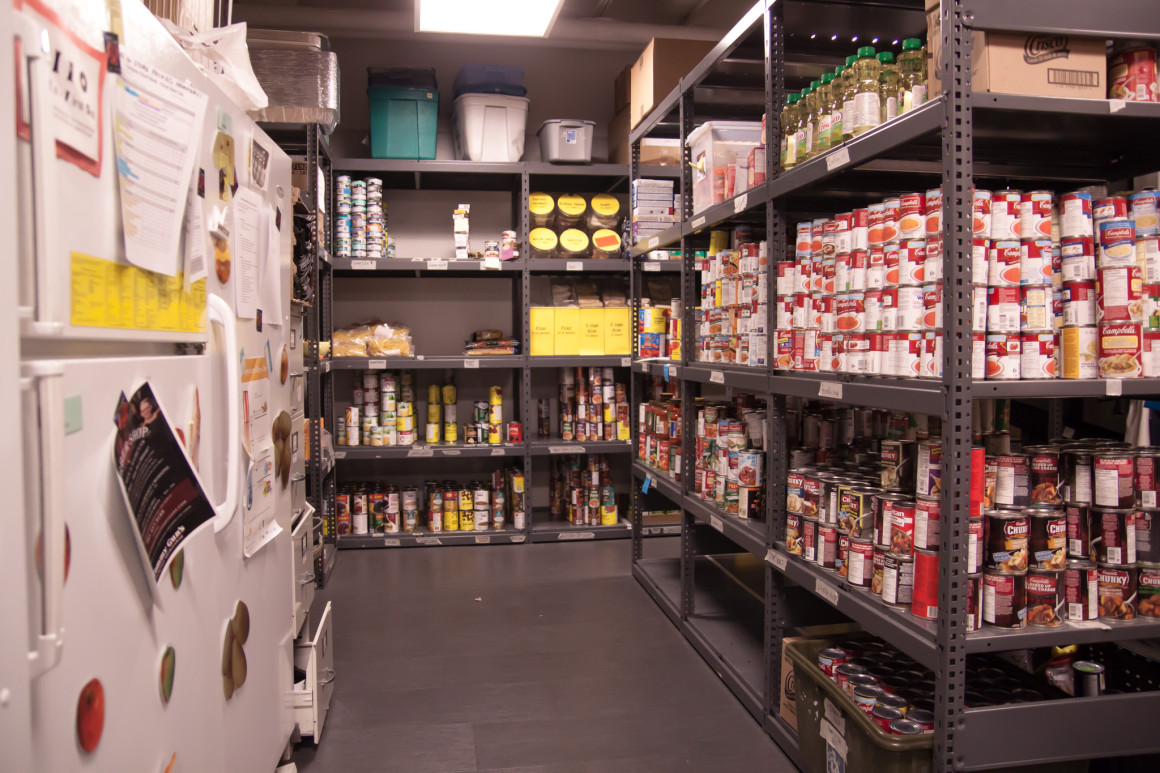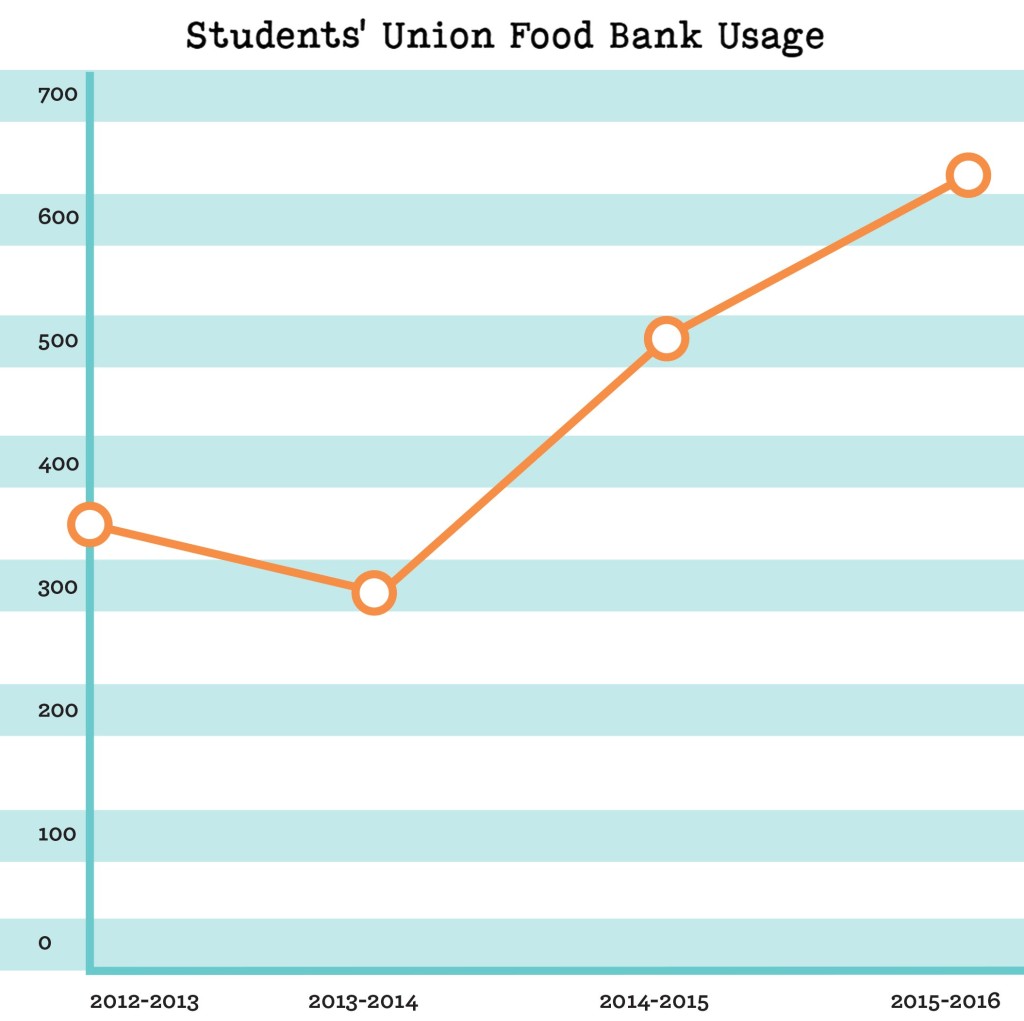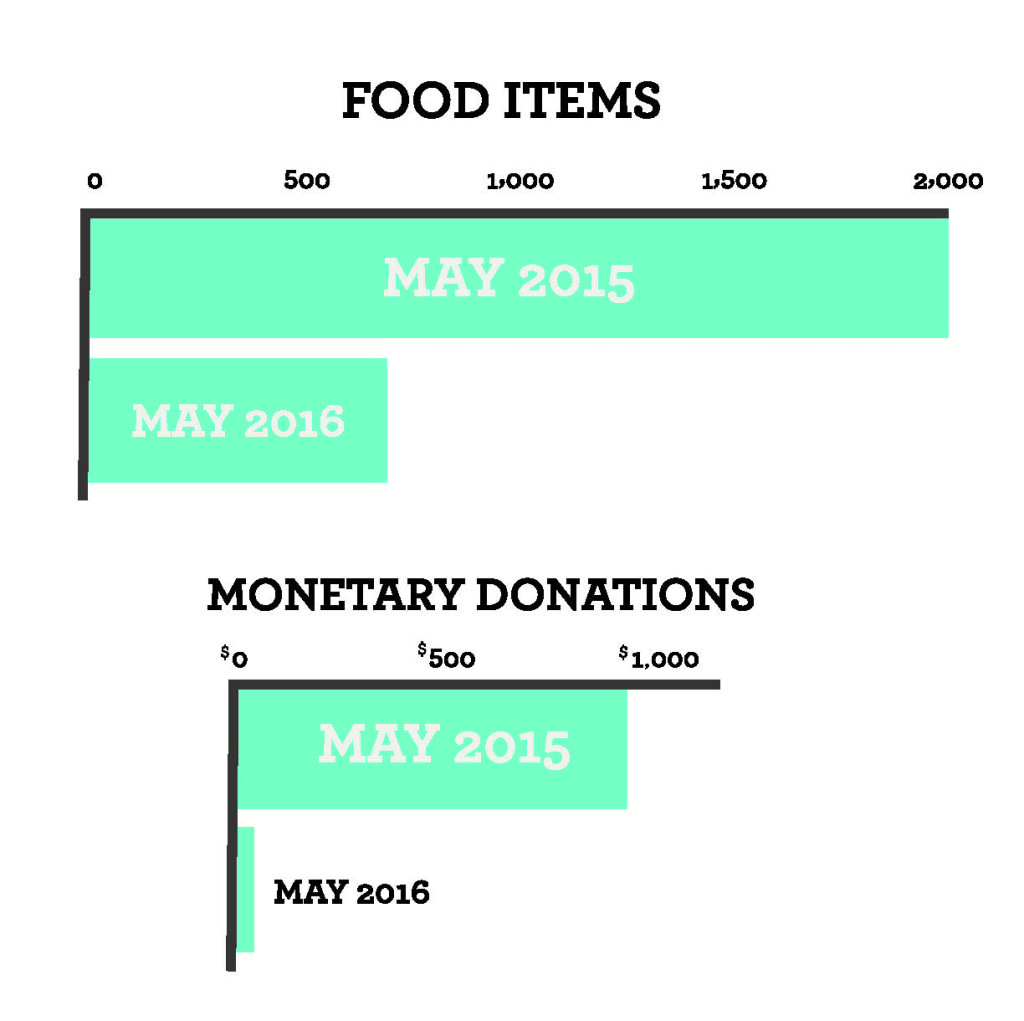
Economic woes cause SU food bank donations to plummet
By Scott Strasser, June 10 2016 —
With high food prices and province-wide unemployment, the Students’ Union food bank is feeling the pinch of Alberta’s economic recession.
According to coordinator Allison Iriye, the SU food bank saw increased usage in 2015–16 from the previous three years, but has seen a heavy decline in recent donations.
“Our usage is up quite a bit,” Iriye said. “Those numbers have just been going up and up.”
The food bank fed a total of 631 people last year — a 25 per cent increase over 504 people fed in 2014–15.
Those numbers show a significant increase from the 346 people fed in 2012–13 and 295 in 2013–14. The usage spike coincided with increased unemployment and Alberta’s slide into recession.

But as more people access the food bank, food and monetary donations to the service have declined.
According to Iriye, people donated 2,000 food items and $900 to the food bank in May 2015. In comparison, May 2016 saw just 700 food items and $20 donated.
Iriye said this May was unusually active for the food bank. She said the bank gave out more food hampers in May than any other month this past year.
“It’s quite a bit of a drastic jump from last May. Usually the spring and summers are quite quiet, so this was a bit of a shock,” she said.
Iriye said the food bank’s recent struggles could be due to a combination of factors.
“The economic situation in Alberta is not the greatest right now,” Iriye said. “I know a lot of donors are possibly not in the position to make donations. People donate when they can. They just can’t right now.”
Increased food prices could also be a factor. The national consumer price index saw a four per cent spike in food prices in January 2016, largely due to the decreasing value of the Canadian dollar.
Fruits and vegetables saw the biggest price spikes, with tomatoes increasing 30 per cent in price from 2015. Broccoli, cauliflower, celery and peppers all went up 23 per cent.
According to Iriye, fruits and vegetables are among the food bank’s most in-demand foods, along with canned meat, pasta and cereals.
While the food bank doesn’t hold any large food drives in the spring or summer, Iriye said the July 12 Calgary Stampede President’s breakfast should help.
“They’ll be collecting donations for us there,” Ireye said.
The SU food bank’s problems are consistent with those seen at the city level — the Calgary Food Bank forecasts its highest ever demand this summer. The CFB has already fed 130,000 people since August 2015 and expects that number to reach 170,000 by the end of their fiscal year on August 31.
CFB spokesperson Shawna Ogston said reaching 170,000 would beat the organization’s previous high of 147,000 people fed in 2011. 
“Our numbers are constantly rising,” Ogston said. “When a recession hits, it takes a good couple of years for people to get onto their feet. So they’ve exhausted all their resources and unfortunately have to come to us.”
The SU food bank is open seven days a week and is located in the SU volunteer centre. U of C students, staff and alumni within their first two years of graduation are eligible to use it.
The food bank was founded in 1993 as a student club, but later expanded into a subsidized program due to rising demand and popularity.
The food bank also coordinates free breakfast in the Q Centre on Wednesdays and Thursdays during the fall and winter
semesters.
“We try to provide a nice, wholesome breakfast with toast, fresh fruit, yogurt, juice boxes,” Iriye said. “Usually we provide a snack for later as well. And usage for that has gone up quite a bit too.”
